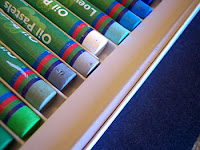Advertisement
Pastels-And-Fixative-Debating
By Carmi Weingrod
 Pastelists have been debating about fixatives since the eighteenth century. Now, after more than two hundred years of dialogue, the questions are still unresolved. Ask any group of pastelists about the topic and you’re likely to hear a volley of responses.
Pastelists have been debating about fixatives since the eighteenth century. Now, after more than two hundred years of dialogue, the questions are still unresolved. Ask any group of pastelists about the topic and you’re likely to hear a volley of responses.
Some use fixative sparingly in the painting process to obtain certain color effects, some use it as a protective finish on completed paintings and others never use it at all. At least there’s agreement on one thing Pastel is a structurally fragile medium susceptible to mechanical injury and that makes paintings created with it difficult to store, frame and transport. Although a final coat of fixative appears to keep some pastel particles intact, it also obliterates the unique color and textural qualities that distinguish pastel from other painting mediums.
Unfortunately, the fixative dialogue delivers no clear cut answers, leaving the ultimate decision up to each pastel artist. Although I can’t you when to use fixative or how much to use or whether to use it at all, I can provide information to help you make the most educated decision possible about using fixatives in your own work, either in the painting process or as a protective coating for the completed work.